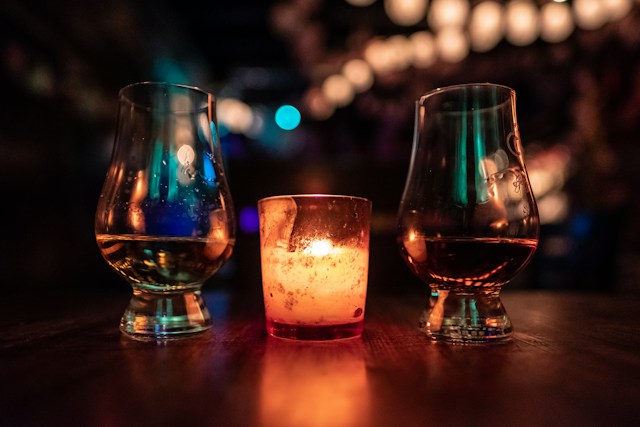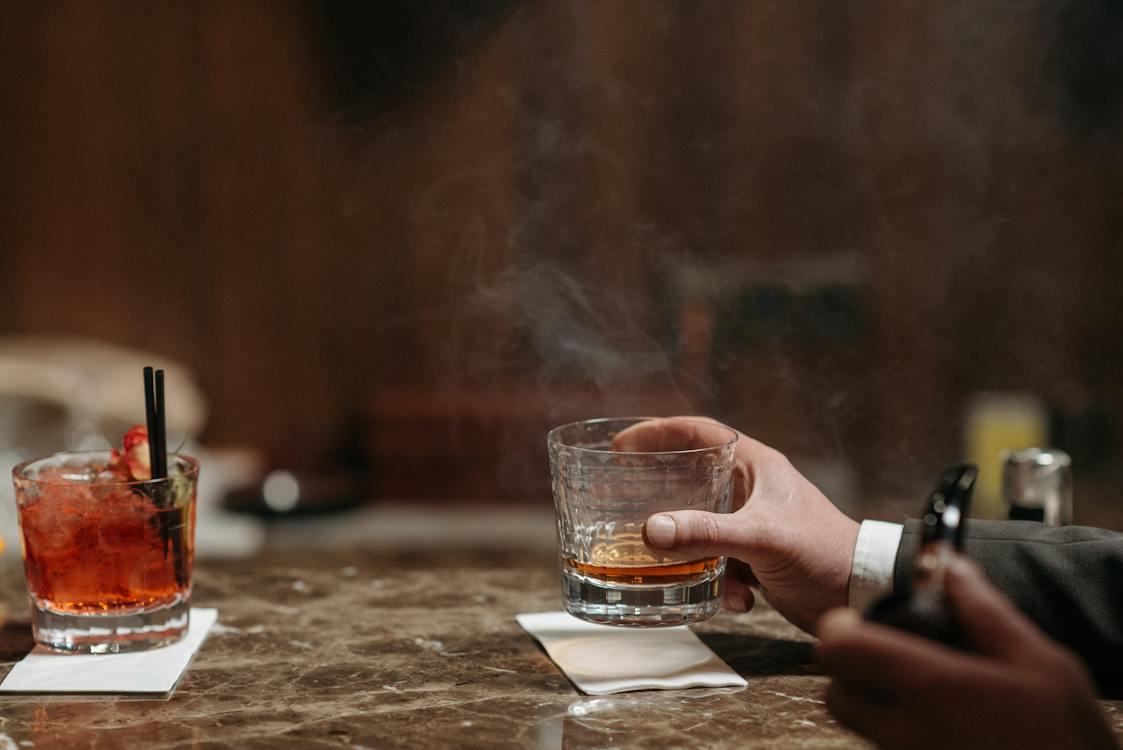
A dram of whiskey is a term that is commonly used in the whiskey world, but not everyone knows exactly how much it is. A dram is a Scottish term that refers to a small amount of whiskey, typically served in a glass. The amount of whiskey in a dram varies depending on where you are in the world and who is pouring it.
By understanding this unit of measurement and its conversion factors, whiskey enthusiasts can better appreciate and compare the different types of whiskey available.
Table of Contents
Understanding Whiskey Measurements
Defining a Dram
A dram is a unit of measurement used to quantify the amount of whiskey served. It is a small amount of whiskey, often served as a tasting portion. The exact amount of a dram varies depending on the region and establishment, but it is typically between 1/8 and 1/4 of an ounce. In the United States, a dram is equivalent to 1/8 of an ounce, or approximately 3.7 milliliters. In the United Kingdom, a dram is typically 1/6 of a fluid ounce, or approximately 4.7 milliliters.
 photo credit: www.pexels.com
photo credit: www.pexels.com
Dram Conversion Factors
Whiskey is often measured in different units around the world. To convert between these units, conversion factors are used. For example, one dram is equal to 0.125 fluid ounces, or 3.696 milliliters. One fluid ounce is equivalent to 8 drams, or approximately 29.573 milliliters. It is important to note that these conversion factors are approximate, and the actual amount of whiskey served may vary slightly.
To better understand whiskey measurements, it may be helpful to review the most common units used for measuring whiskey:
- Dram: A small amount of whiskey, typically between 1/8 and 1/4 of an ounce.
- Fluid Ounce: A unit of volume equal to 1/8 of a cup, or approximately 29.573 milliliters.
- Milliliter: A unit of volume equal to one-thousandth of a liter, or approximately 0.034 fluid ounces.
- Liter: A unit of volume equal to 1,000 milliliters, or approximately 33.814 fluid ounces.
Whiskey Types and Dram Sizes
Standard Dram Across Whiskey Types
A dram of whiskey is a measure of whiskey that is commonly served in bars and pubs. The standard size of a dram is 1.5 fluid ounces, which is equivalent to 44 milliliters. This size is typically used for all types of whiskey, including bourbon, Scotch, and Irish whiskey.
Regional Variations in Dram Measurements
While the standard dram size is commonly used across whiskey types, there are regional variations in dram measurements. In Scotland, for example, a dram is traditionally measured at 35 milliliters, which is slightly smaller than the standard dram size. In England, spirits are typically measured at 25 or 50 milliliters.
In the United States, whiskey servings tend to be larger than in other countries, with some establishments serving drams as large as 2 ounces. However, the standard dram size of 1.5 ounces is still widely used.
Legal and Historical Context
Legal Definition of a Dram
In the United States, a dram is a unit of measurement recognized by the Alcohol and Tobacco Tax and Trade Bureau (TTB) for the purpose of labeling alcoholic beverages. According to the TTB, a dram is equal to 1/8 of a fluid ounce, or 3.697 milliliters. This means that a standard 750-ml bottle of whiskey contains approximately 200 drams.
In the United Kingdom, a dram is not a legal unit of measurement for alcohol. Instead, the legal unit of measurement is the milliliter or centiliter. However, the term “dram” is still commonly used in the UK as a colloquial term to refer to a small measure of whiskey.
Practical Guide to Whiskey Serving Sizes
This section will provide a brief overview of the most common serving sizes for whiskey.
Bar Serving Standards
In bars and restaurants, whiskey is typically served in larger quantities than at home. A standard pour of whiskey in a bar is usually about 2 ounces, or 60 milliliters. This is also known as a double or a large pour.
Some bars may also offer a single pour of whiskey, which is usually about 1 ounce or 30 milliliters. A single pour is often used in whiskey flights or tastings, where customers can sample different types of whiskey in smaller quantities.
It is important to note that the serving size of whiskey can vary depending on the type of whiskey and the establishment. Some bars may serve larger or smaller pours of whiskey, depending on their own standards or preferences.
Purchasing Whiskey by the Dram
When it comes to purchasing whiskey, buying it by the dram can be an excellent way to try out new flavors or sample high-end brands without committing to a full bottle. Here are some factors to consider when purchasing whiskey by the dram:
Cost Factors for a Dram of Whiskey
The cost of a dram of whiskey can vary widely, depending on several factors. For example, the age, rarity, and quality of the whiskey can all impact the price. Additionally, the location where the whiskey is purchased can also affect the cost. For instance, a dram of whiskey at a high-end bar in a major city may cost significantly more than the same dram at a local liquor store.
Buying Whiskey in Bulk Versus Single Drams
While purchasing whiskey by the dram can be a great way to try out new flavors, it can also be more expensive than buying a full bottle. However, buying a full bottle can be a significant investment, especially if you’re not sure if you’ll enjoy the whiskey.
One option to consider is purchasing a set of mini bottles, which typically contain several different types of whiskey in smaller quantities. This can be a cost-effective way to try out multiple brands and flavors without committing to a full bottle.
Another option is to purchase a full bottle and split it with friends or family. This can be a great way to try out a new whiskey while also sharing the cost.
Frequently Asked Questions
What volume does a standard dram of whiskey represent in milliliters?
A dram of whiskey is a small serving of spirits, typically used for tasting or sampling. The volume of a standard dram can vary depending on the country and the establishment. In Scotland, a dram is usually 25 milliliters, while in England, it is typically 35 milliliters. In the United States, a dram can range from 1 to 1.5 ounces (29.5 to 44.3 milliliters).
How does the size of a dram compare to a standard shot of whiskey?
A standard shot of whiskey in the United States is typically 1.5 ounces (44.3 milliliters), which is equivalent to one and a half drams. In Scotland, a standard shot is closer to one dram, at 25 milliliters.
What is the typical ounce measurement for a dram of whiskey?
The typical ounce measurement for a dram of whiskey is around 1 ounce (29.5 milliliters), although this can vary depending on the country and establishment. In Scotland, a dram is typically 25 milliliters, while in England, it is usually 35 milliliters.
What defines a Dram glass and its use in whiskey tasting?
A Dram glass is a small, tulip-shaped glass that is used for whiskey tasting. It is designed to concentrate the aromas of the whiskey, allowing the taster to fully appreciate the nuances of the spirit. The glass typically holds around 1 to 2 ounces (29.5 to 59.1 milliliters) of liquid and is often used in whiskey tastings and competitions.
What historical reasons are there for referring to whiskey servings as drams?
The term “dram” comes from the Old English word “dram,” which means “a small quantity of something.” The word was first used to describe a unit of weight, but it later came to be used to describe a small serving of spirits. The term “dram” has been used to refer to whiskey servings for centuries and is still commonly used today.
Conclusion
A dram of whiskey is a small unit of measurement used to serve whiskey in bars and pubs. It is equal to one-eighth of a fluid ounce, or approximately 3.7 ml. However, the amount of whiskey served in a dram can vary depending on the region and establishment.
When ordering whiskey, it is important to understand the amount of whiskey served in a dram to avoid overconsumption. It is also essential to drink responsibly and in moderation.
A dram of whiskey is a small but important unit of measurement that plays a significant role in the enjoyment and appreciation of whiskey.
Related Posts
If you’re interested in learning more about whisky and its culture, here are some related posts from The Whisky Lady:
- How to share your whisky passion: In this post, The Whisky Lady shares some tips on how to share your passion for whisky with others.
- Story time: opening my whisky bar from scratch: The Whisky Lady shares her experience of opening a whisky bar from scratch and the challenges she faced.
- A practical guide to independent whisky bottlers: This post provides a practical guide to independent whisky bottlers and how they differ from the distilleries.
- Dos and Donts of Whisky Cask investment: The Whisky Lady provides some dos and don’ts of whisky cask investment.
- Irish Whiskey isn’t only that “smooth” beverage you heard of: In this post, The Whisky Lady talks about the misconceptions surrounding Irish Whiskey and how it’s much more than just a smooth beverage.



